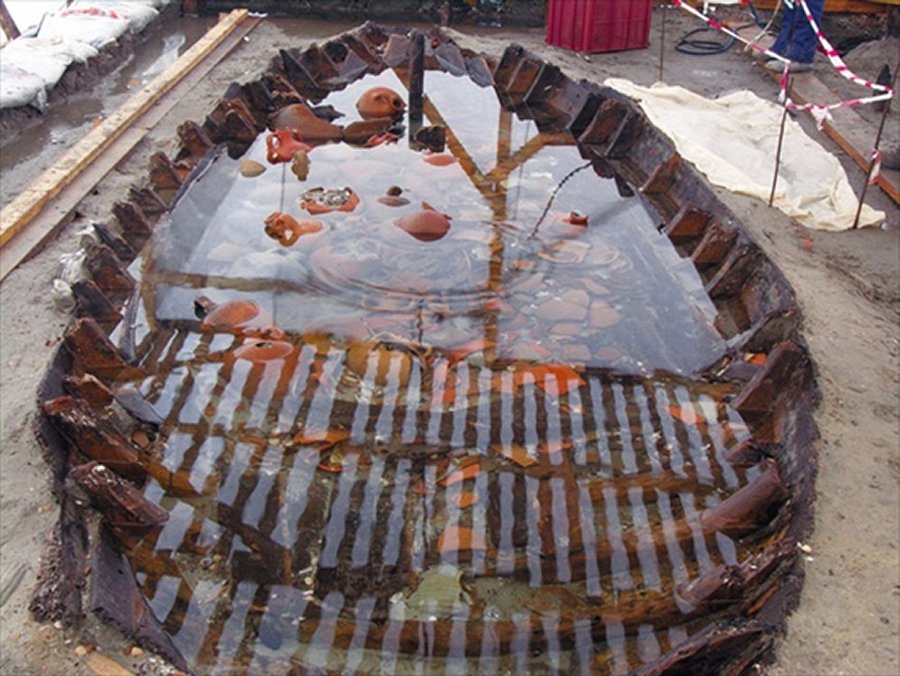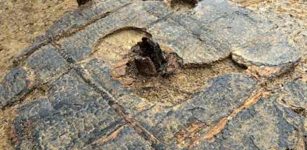Discovered Yenikapi Shipwrecks Are A Unique Historical Treasure
MessageToEagle.com – Of the 37 Byzantine shipwrecks that were discovered at Yenikapı in Istanbul, Turkey, eight are now described in a new report and scientists refer to them as unique historical treasure.
Researchers say that “these well-preserved shipwrecks are an important new source of information on the maritime commerce of Constantinople and the gradual shift from shell-based to skeleton-based shipbuilding in the Mediterranean during the second half of the first millennium AD.”
The Yenikapı site, located in the Istanbul neighborhood of the same name, was first revealed in 2004 during the construction of a subterranean rail line and station for a new rail link between Europe and Asia.

Archaeologists from the Istanbul Archaeological Museums quickly realized they had discovered the ancient harbor of Theodosius, one of Constantinople’s trade harbors, built during the reign of Theodosius I (AD 379-395).
A major trade center from the 4th century AD until river silt filled it in around 1500, the harbor, its stone walls, and amazingly well-preserved remnants of the port’s activities lay forgotten for centuries.
Since 2004, the site has been one of the world’s largest archaeological digs.
Each day, hundreds of laborers dug under the direction of the Istanbul Archeological Museums. Yenikapı’s wet soils have revealed everything from the foundations of wattle-and-daub mud huts and burials from the Neolithic period (approximately 6000 BC) to Ottoman structures, and myriad artifacts including Byzantine wooden combs and leather shoes, the bones of hard-worked dockside horses and camels, and even human skulls that may have come from criminals whose severed heads were tossed in the harbor.

Archaeologists also uncovered dozens of shipwrecks and hundreds of anchors from what was once the harbor floor. Now that these excavations are nearing completion, the remains of 37 separate vessels dating from the 5th to the 11th centuries AD have emerged from the mud.
The first archaeological examples of Byzantine rowed ships-almost certainly warships-as well as merchant vessels, some with cargoes, were preserved thanks to their burial in a thick layer of wet mud.
The ships are in very good condition.
“Never before has such a large number and types of well-preserved vessels been found at a single location,” said study author Cemal Pulak, of the Institute of Nautical Archaeology at Texas A&M University.
“It is through meticulous and time-consuming detective work that we slowly begin to understand how these ships were built, modified, overhauled and used. By such means, we try understand the minds of the shipbuilders and their design and conceptualization processes, in order to better comprehend the history of science and engineering,” Pulak said.
Until recently, much of the information about Byzantine ships had come from the several medium-size seagoing ships that had been excavated in the Mediterranean, Pulak said.
“Yenikapi has yielded a wide array of small rowboats, fishing boats, utility vessels and even naval ships, all directly from Constantinople itself, the capital of the Byzantine Empire,” he added.
MessageToEagle.com
source: Eight Byzantine Shipwrecks from the Theodosian Harbour Excavations at Yenikapı in Istanbul, Turkey
Institute of Nautical Archaeology










